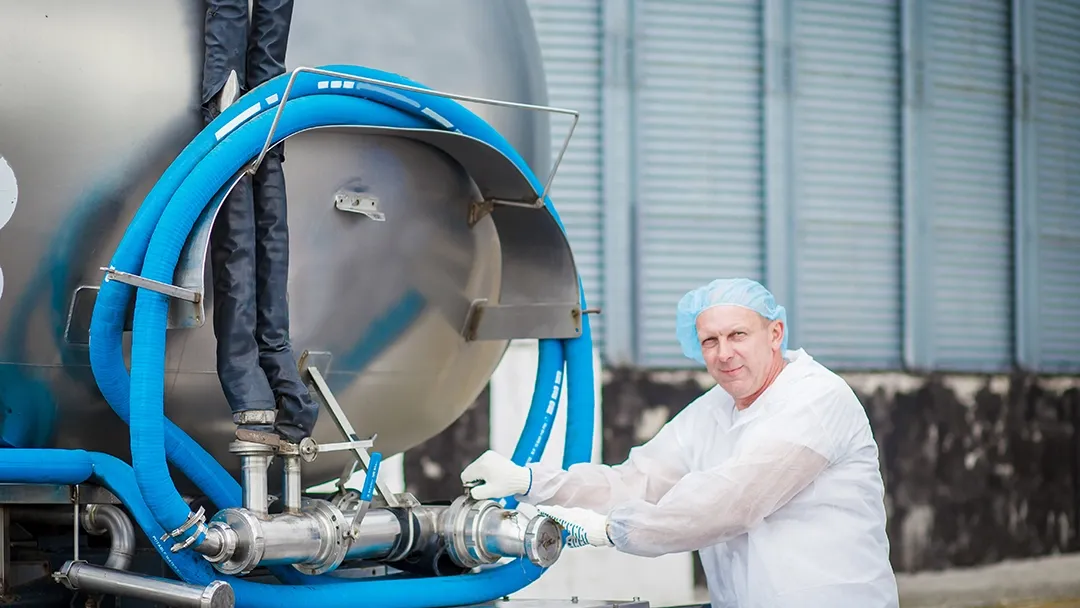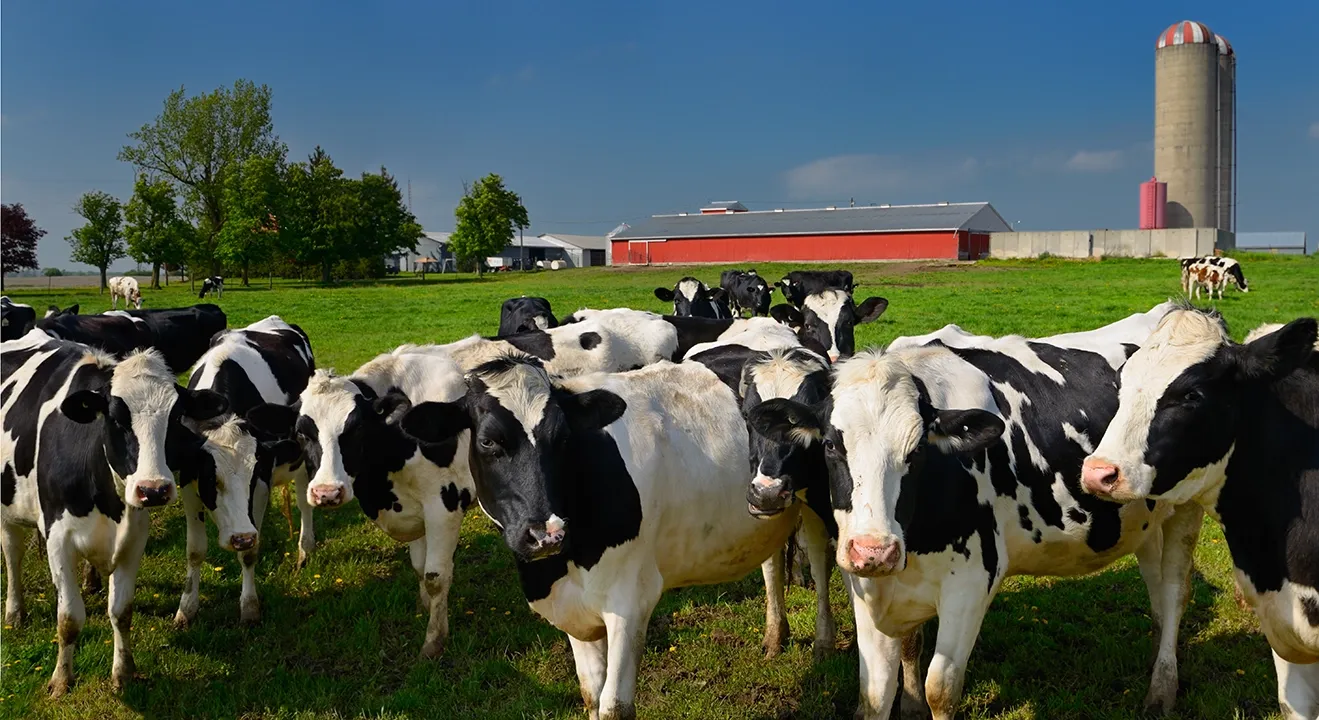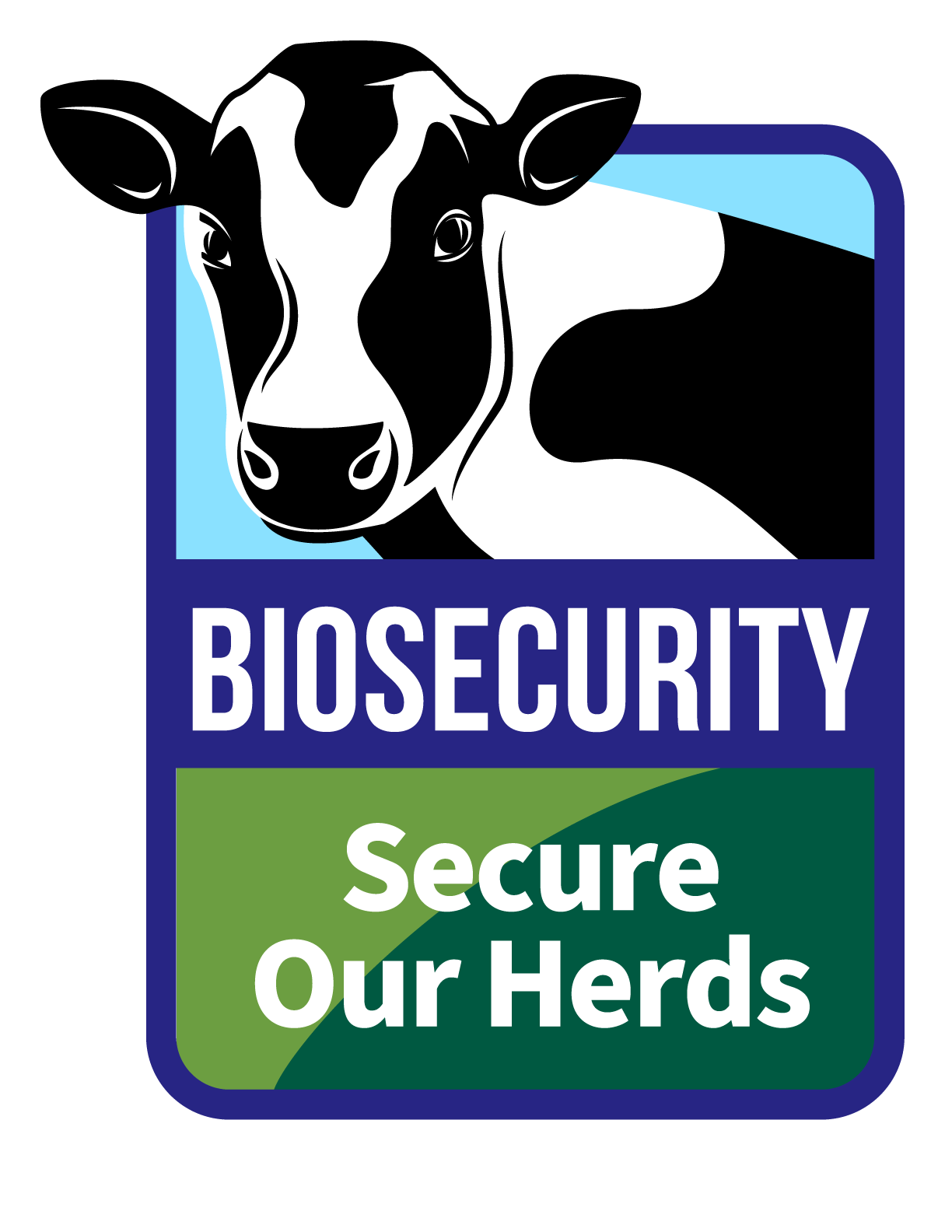
USDA announced the start of the National Milk Testing Strategy (NMTS) in December 2024. The NMTS builds on measures USDA has taken since the beginning of the outbreak of highly pathogenic avian influenza (HPAI H5N1) in dairy cattle. It was developed with significant input from State, veterinary, and public health stakeholders.
The NMTS is an important additional step to help States and farmers contain and eliminate H5 in their livestock and from the U.S. dairy population overall. This page answers frequently asked questions about the strategy.
The five-stage strategy includes:
- Stage 1—National Plant Silo Monitoring: Conducting nationwide testing of milk silos at dairy processing facilities to identify where the disease is present, monitor trends, and help States identify potentially affected herds.
- Stage 2—Determining State Status: Working with States to stand up bulk milk sampling programs to identify herds that are affected with H5 or demonstrate an unaffected status.
- Stage 3—Detecting and Responding to the Virus in Affected States: Identifying specific cases and implementing rapid response measures, including enhanced biosecurity, movement controls, and contact tracing, in States with H5 detections.
- Stage 4—Demonstrating H5 Absence in Unaffected States: Continuing and progressively reducing sampling of bulk milk as the State demonstrates continual unaffected status.
- Stage 5—Demonstrating H5 Freedom in U.S. Dairy Cattle: Conducting periodic sampling and testing to illustrate long-term absence from the national herd.
We will consider ending the NMTS when all States reach Stage 5 and can demonstrate freedom from H5 in the U.S. dairy herd.
In April 2024, USDA issued a Federal Order mandating testing of lactating dairy cattle prior to interstate movement. That Federal Order is still in force.
The December 2024 Federal Order expands on that testing requirement by mandating that any entity that sends or holds milk for pasteurization (such as a dairy farm, bulk milk transporter, bulk milk transfer station, or dairy processing facility) provide raw (unpasteurized) milk samples for influenza A testing to APHIS, upon request. APHIS will leverage existing milk sampling infrastructure as much as possible to minimize the burden of sample collection for producers, processors, and regulatory officials.
Additionally, this order mandates that laboratories and State veterinarians report positive results, including from raw milk, to USDA. It also requires herd owners with positive herds to provide epidemiological information about their herd to USDA.
Producers must provide raw milk samples for testing, upon request. Producers with positive test results will be required to cooperate with State and Federal officials as well as complete an epidemiologic study to determine how their farm may have become affected. Any herd that is connected to a positive herd through the epidemiological study must also submit to testing and follow movement restrictions implemented under the authority of State animal health officials to reduce virus spread.
Yes. While the Federal Order mandates that any entity that sends or holds milk for pasteurization participate in testing, it does not preclude voluntary participation or for other raw milk collection points. USDA will provide equivalent reimbursements to all participants regardless of whether their participation is mandatory or voluntary.
USDA also offers a number of other tools for dairy producers to monitor the health of their herds, including regular bulk milk sampling for HPAI through our Dairy Herd Status Program. Additionally, there are a number of supports for livestock producers—including for producers not participating in the Dairy Herd Status Program and NMTS—such as:
- Support for herd biosecurity planning and implementation
- Compensation for veterinary and shipping costs association with H5N1 sample collection
- Compensation for loss of milk production
Those processors and producers wanting to voluntarily participate in NMTS, the Dairy Herd Status Program, and/or other supports mentioned should contact their Area Veterinarian in Charge or State animal health official to enroll.
USDA has been testing milk under Federal Order since April 2024. We continue to protect producers’ personally identifiable information and protected business information according to applicable statutes and regulations as we expand testing under the December 2024 Federal Order. We only share State-level or aggregated data.
Raw milk samples that test positive for H5 trigger additional State investigation. The goal is to quickly identify cases and implement rapid response measures and surveillance to eliminate the virus from affected herds. A State is not considered to be affected based only on test results for raw milk samples collected from processing plant silos. Additional testing at the herd level determines herd status as well as State status under the NMTS.
A State in which at least one dairy herd has been confirmed positive for H5 based on herd testing is assigned to Stage 3. States in Stage 3 are required to conduct additional surveillance, identify cases, and implement rapid response measures, including enhanced biosecurity, to eliminate the virus from affected herds.
Once a State progresses to Stage 4, ongoing testing continues to demonstrate virus absence or elimination. USDA uses statistical sampling and a phased approach to reduce sampling frequency over time. A State may use the results from ongoing nationwide testing of milk silos at dairy processing facilities (Stage 1) to meet Stage 4 surveillance requirements if sampling is representative of dairy herds within that State.
Each stage represents a different type of sampling or surveillance based on the State’s status. Stages within the NMTS may occur concurrently throughout the country based on each State’s situation. Each State may not need to proceed through all the Stages in a linear fashion depending on the testing results. Sampling schemes in each stage are flexible based on each State’s resources and industry.
The NMTS creates a framework for increasing testing in every State to ensure that we can confidently detect the virus when it is present. If the virus is present, we begin testing at the farm level to determine which premises are affected so additional response measures can be put in place. Ongoing testing demonstrates when that dairy, and eventually the State, becomes free of the virus.
USDA has authority under Section 8308 of the amended Animal Health Protection Act (AHPA) to carry out operations and measures to detect, control, or eradicate any pest or disease of livestock. Section 8315 authorizes the Secretary of Agriculture to issue orders as necessary to carry out the AHPA. Data collected since the start of the outbreak indicates that virus can be transmitted on equipment, people, or other items that move from farm to farm, including between dairies and poultry facilities. Expanded disease surveillance provides more data to detect disease, understand virus prevalence, and inform focused response efforts as part of a broader strategy for containing and ultimately eliminating the virus. (See 7 U.S.C. §§ 8301, 8305, 8308, 8310, 8315.)
USDA works cooperatively with State animal and public health officials, providing resources and financial support, to collect samples through existing dairy regulatory sampling infrastructure. The National Animal Health Laboratory Network and the National Veterinary Services Laboratories conduct testing. USDA and State animal health officials work cooperatively to respond to detections of H5 influenza in dairy herds.
Sample size is based on the number of dairies in the State. In some States, this could be 75 percent or more of the State’s dairies.
USDA has been communicating with stakeholders since H5 was first detected in dairy cows in late March 2024. We committed to work quickly and in concert with our Federal and State partners to better understand, mitigate the risk of spread, and contain the virus. As our understanding of this new disease in dairy cows and its impact on U.S. dairy and poultry industries has expanded, we’ve used lessons learned to adapt the response. After successful application of bulk milk tank testing as a screening tool in several States and an assessment of necessary resources in 2024, USDA and stakeholders were then prepared to successfully implement this expanded surveillance strategy.
No. Significant research by USDA and the U.S. Food and Drug Administration reaffirmed the safety of our food supply, including meat and milk. More information on food safety studies is available at News and Science Updates.
Yes. USDA and CDC—working with their State partners—have a coordinated process to ensure that public health officials are notified if a farm tests positive. This ensures that individuals on farms can access personal protective equipment, recommendations on its use, and testing and treatment if they feel unwell or have been exposed. The NMTS does not change how USDA and our Federal partners address public health.



